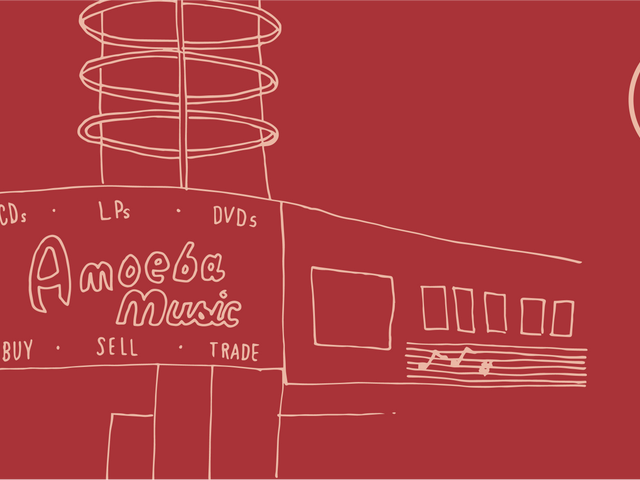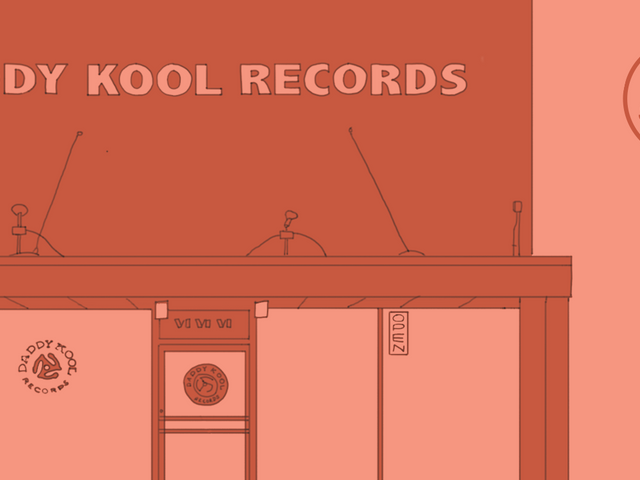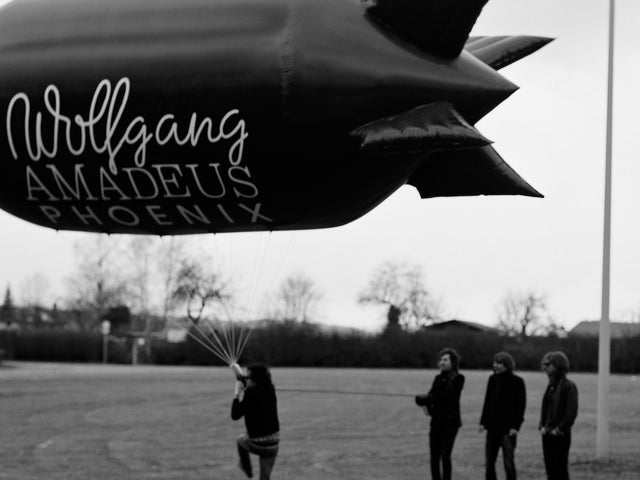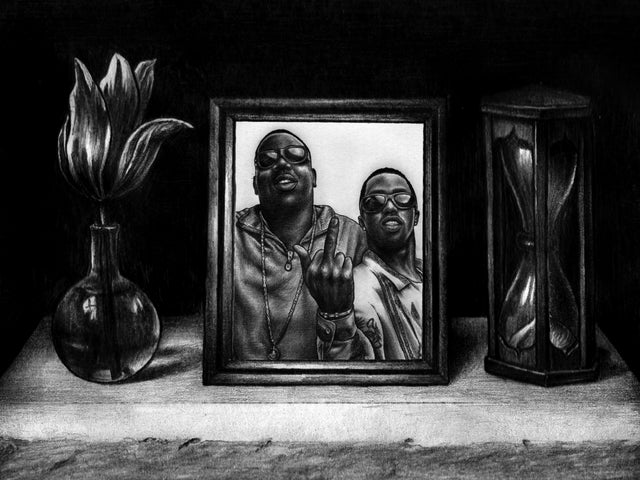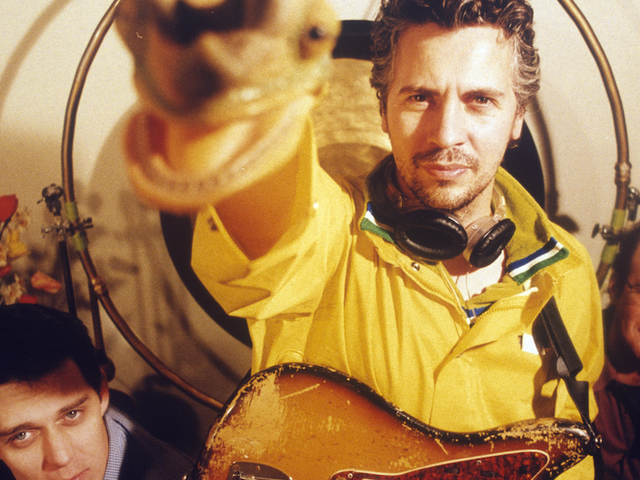The 50 Best Record Stores In America is an essay series where we attempt to find the best record store in every state. These aren’t necessarily the record stores with the best prices or the deepest selection; you can use Yelp for that. Each record store featured has a story that goes beyond what’s on its shelves; these stores have history, foster a sense of community and mean something to the people who frequent them.
Everything good in New York is long gone or going soon. That’s a slight exaggeration — we like those here — but it’s also the truth. Anyone who’s lived here for any amount of time can tell you this, from lifelong cranks like me to last semester’s new NYU students. Just this week I heard that one of the last remaining bars that served me when I was underage is closing. Not because its owners let some teenagers get buzzed 20 years ago, but because the rent situation in today’s New York is fucking outrageous, to put it politely. “I am sorry to say that we have lost our battle with the economic times, the city, and the landlord,” the pub’s proprietor wrote, sounding just like every other poor schmuck who made the mistake of thinking they could maintain a local business in this hyper-gentrified nightmare. I’ll miss that place, along with countless late-night diners, cheap takeout spots, and scuzzy DIY venues that have gone the way of the subway token.
Record stores have been hit particularly hard in the last decade, and it’s difficult to sum up the damage without sounding old and bitter. You want to hear about the best record store in New York, kid? It was Kim’s, down on St. Mark’s Place and up near Columbia, where I encountered ruthless condescension for my basic indie-rock purchases and kept coming back for more until they finally closed around 2008. It was Other Music, where I discovered all kinds of weird delights before it got turned into a vegan yogurt restaurant in 2017. It was the Tower Records at Broadway and West 66th Street, the Virgin Megastore in Union Square, and several Coconuts franchises in southern Westchester County, all of which helped shape my taste when I didn’t have a clue, all long since liquidated.
The reasons for these sad endings vary, but one root cause stands out, and that’s New York’s out-of-control economic trendlines. The city has gone from a place that welcomed artists and bohemians to one that methodically overcharges them out of existence. I recommend reading Jeremiah Moss’ book Vanishing New York for much more on what’s been lost and why it happened. It’s not much of a stretch to suggest that record stores are disappearing because record stores, with their tenuous profit margins and their communities of outsiders, are everything that modern capitalism hates.

That said, there are still lots of record stores in New York that need more customers if they’re going to avoid a similar fate. I’m as guilty as anyone of dodging this responsibility; like many people, I now do the majority of my music shopping either online, on Bandcamp and Discogs, or at merch tables at shows. I have my brick-and-mortar favorites, like Turntable Lab, where the selection is small but excellent, and Academy Records, where the spirit of the cantankerous cashiers of the 20th century lives on, but it seemed wrong to pick a subject for this column without doing a little more due diligence. So I spent a few months researching, asking friends for recommendations and visiting a bunch of shops I’d been meaning to stop by forever. (Yes, that’s right: I selflessly devoted hours of my life to browsing and buying LPs, all for you, the reader. Please, stop applauding, you’re embarrassing me.)
This search brought me in time to a sleepy corner in Bushwick where a bodega and a beauty salon sit next to Human Head Records. A glass mannequin head was slowly rotating on a turntable in the store’s front window, underneath a ragged banner with the words “HUMAN HEAD” in a skeleton bone font. Inside, I found more plastic skulls, and boxes and boxes of used LPs covering every available surface. The overflowing new arrivals rack is sorted by days of the week. There’s a semblance of alphabetical order in a few of the bigger genre racks, but mostly the place is built for serendipity. I walked out of my first visit with a copy of Brian Eno’s Discreet Music, whose dusting of surface noise only enhances the vibe.
Two guys from Wisconsin founded Human Head in the summer of 2013, a few years after they met at an Art Brut show at Mercury Lounge. Travis Klein knew his way around a warehouse from his time working in distribution for a beverage company. He’d lost that job and begun selling records on the side to supplement his unemployment checks when his buddy Steve Smith, a restaurateur whose own business was reeling after Hurricane Sandy, suggested that they open a record store together. “I saw his enthusiasm — I couldn’t get him up before noon on certain days, but he was up at the crack of dawn to go to record shows,” Smith says. “We didn’t know what we were doing, but we fell in the right place.”
Klein smiles. “It was a bad idea that worked out.”
Smith, who lived in the neighborhood, scouted the location. “It used to be a uniform shop for cops and security guards,” he says. “You had to get buzzed in.” A friend’s girlfriend who was in beauty school donated their first few mannequin parts. Poster artist Rob Jones, who’s worked extensively with Jack White, designed the head-in-a-jar logo. Reactions to the decor, Klein says, typically range from “confusion to laughter to fear. Sometimes you can see people questioning our sanity from a distance, like, ‘What the hell’s wrong with you guys?’ It’s cool.”
At first they mostly stocked the rock, punk and metal records that they knew best, but they quickly expanded out to the wide range of soul, jazz, reggae, hip-hop and Latin music that now makes up the lion’s share of their inventory. “If we’d stuck with the rock base that we started with, I don’t think we’d be doing nearly as well,” Smith says. “We might not even be here.”
Down the block from Human Head is the stretch of Graham Avenue where the street signs say “Avenue of Puerto Rico,” despite the intermittent efforts of racist real estate speculators to strip that label off. The store’s owners are conscious of their role as interlopers in a historically Puerto Rican area. “We’re carpetbaggers,” Smith admits. “But we’re trying to be part of the history of this neighborhood.”
That means building relationships with people who have lived in Bushwick for much longer than they have. Much of their Latin music stock comes from personal collections sold off by longtime residents or their family members, including many with record-business stories of their own. “A lot of music was made around here,” Klein says. “I’ll look at the label and see an address in the neighborhood.” Their crate-digging clientele has included bandleader and percussionist Johnny Zamot (“He’s been coming to this neighborhood for 30 years, looking for music,” Klein says) and legendary rap producer Large Professor.
Klein excitedly tells me how he tracked down a rare memento for a customer named Freddie who used to play in a local salsa act circa 1970. “A couple months ago, a guy brings me a pile of junk in a trunk, all these Latin records with no sleeves,” he says. “And inside there’s this one 45, and sure enough, it’s Freddie’s 45 that he doesn’t have a copy of. I’ve had guys looking for this for years!”
There’s no question that Human Head is an incredible find for anyone who loves shopping for used records. It’s got a real sense of place, the selection is top-notch, the prices are reasonable, and the staff is friendly. But is it the best record store in New York? It’s against my beliefs as a New Yorker to make a definitive ruling on a subject like this. The whole point of this city is that everyone has an opinion — many of them bad, some of them incomprehensible, but all of them our own. Consensus is for tourists. Get out there, buy some records and figure it out for yourself.
Up next, we travel to the best record store in South Carolina.
Simon Vozick-Levinson is a writer and editor in New York City. His work has appeared in The New York Times, Rolling Stone, Vulture, Billboard, and elsewhere.
Related Articles
Join the Club!
Join Now, Starting at $44Exclusive 15% Off for Teachers, Students, Military members, Healthcare professionals & First Responders - Get Verified!

